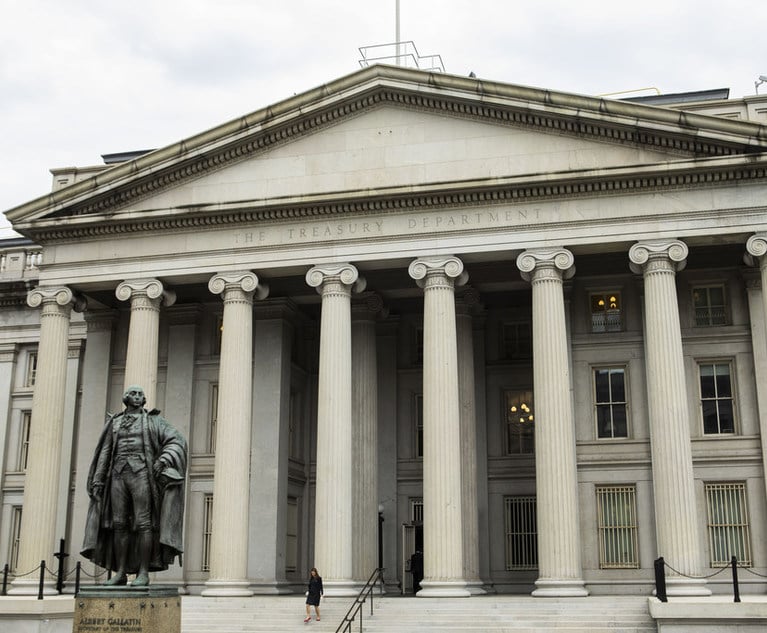NIST releases proposed cybersecurity framework
Given the gargantuan cost of cybersecurity, this set of standards should be a good place to start for less tech-savvy companies who are looking for guidance in an effort to more effectively address cyber risk.
October 24, 2013 at 08:19 AM
3 minute read
The original version of this story was published on Law.com
One of the most difficult aspects of dealing with technology for a major company is the complete lack of standards. In a complex and quickly-changing environment like IT, standards are proposed frequently, but seldom have the staying power to be used as a barometer for success. The National Institute of Science and Technology (NIST) is hoping to change that by releasing cybersecurity standards that would hold companies accountable to more than just an anti-virus suite and crossed fingers.
The NIST released its preliminary plan on Oct. 22, which is intended to act as the basis for improved control over IT infrastructure for companies in all sectors. While not mandatory, the list will be a repository for best practices, and will rely on active engagement from those in the tech community to test its validity.
Given the gargantuan cost of cybersecurity, this set of standards should be a good place to start for less tech-savvy companies who are looking for guidance in an effort to more effectively address cyber risk. The “Preliminary Cybersecurity Framework,” will outline steps that can be changed or customized contingent on the size and type of company in which it's being implemented. This initial release will be followed by a 45-day public comment period and an official release that will compile valid commentary in February, according to Secretary of Commerce for Standards and Technology and NIST Director Patrick Gallagher.
“We want to turn today's best practices into common practices, and better equip organizations to understand that good cybersecurity risk management is good business, “Gallagher said in a statement. “The framework will be a living document that allows for continuous improvement as technologies and threats evolve. Industry now has the opportunity to create a more secure world by taking ownership of the framework and including cyber risks in overall risk management strategies.”
A set of standards to follow is certainly welcome in a space where up to 75 percent of companies are moderately vulnerable to attacks on their IT infrastructure. With help from the public, the NIST standards could become that much needed barometer for success.
Read more about cybersecurity here:
Study shows fraud threats have increased across the board
California faces cybersecurity expert deficiency
Avoiding the worst case scenario: Balancing cost and data security
U.S. agencies show 'limited' progress in improving cybersecurity measures
This content has been archived. It is available through our partners, LexisNexis® and Bloomberg Law.
To view this content, please continue to their sites.
Not a Lexis Subscriber?
Subscribe Now
Not a Bloomberg Law Subscriber?
Subscribe Now
NOT FOR REPRINT
© 2025 ALM Global, LLC, All Rights Reserved. Request academic re-use from www.copyright.com. All other uses, submit a request to [email protected]. For more information visit Asset & Logo Licensing.
You Might Like
View All
Internal Whistleblowing Surged Globally in 2024, So Why Were US Numbers Flat?
6 minute read
FTC Finalizes Child Online Privacy Rule Updates, But Ferguson Eyes Further Changes

Supreme Court Reinstates Corporate Disclosure Law Pending Challenge
Trending Stories
- 1Treasury GC Returns to Davis Polk to Co-Chair White-Collar Defense and Investigations Practice
- 2Decision of the Day: JFK to Paris Stowaway's Bail Revocation Explained
- 3Doug Emhoff, Husband of Former VP Harris, Lands at Willkie
- 4LexisNexis Announces Public Availability of Personalized AI Assistant Protégé
- 5Some Thoughts on What It Takes to Connect With Millennial Jurors
Who Got The Work
J. Brugh Lower of Gibbons has entered an appearance for industrial equipment supplier Devco Corporation in a pending trademark infringement lawsuit. The suit, accusing the defendant of selling knock-off Graco products, was filed Dec. 18 in New Jersey District Court by Rivkin Radler on behalf of Graco Inc. and Graco Minnesota. The case, assigned to U.S. District Judge Zahid N. Quraishi, is 3:24-cv-11294, Graco Inc. et al v. Devco Corporation.
Who Got The Work
Rebecca Maller-Stein and Kent A. Yalowitz of Arnold & Porter Kaye Scholer have entered their appearances for Hanaco Venture Capital and its executives, Lior Prosor and David Frankel, in a pending securities lawsuit. The action, filed on Dec. 24 in New York Southern District Court by Zell, Aron & Co. on behalf of Goldeneye Advisors, accuses the defendants of negligently and fraudulently managing the plaintiff's $1 million investment. The case, assigned to U.S. District Judge Vernon S. Broderick, is 1:24-cv-09918, Goldeneye Advisors, LLC v. Hanaco Venture Capital, Ltd. et al.
Who Got The Work
Attorneys from A&O Shearman has stepped in as defense counsel for Toronto-Dominion Bank and other defendants in a pending securities class action. The suit, filed Dec. 11 in New York Southern District Court by Bleichmar Fonti & Auld, accuses the defendants of concealing the bank's 'pervasive' deficiencies in regards to its compliance with the Bank Secrecy Act and the quality of its anti-money laundering controls. The case, assigned to U.S. District Judge Arun Subramanian, is 1:24-cv-09445, Gonzalez v. The Toronto-Dominion Bank et al.
Who Got The Work
Crown Castle International, a Pennsylvania company providing shared communications infrastructure, has turned to Luke D. Wolf of Gordon Rees Scully Mansukhani to fend off a pending breach-of-contract lawsuit. The court action, filed Nov. 25 in Michigan Eastern District Court by Hooper Hathaway PC on behalf of The Town Residences LLC, accuses Crown Castle of failing to transfer approximately $30,000 in utility payments from T-Mobile in breach of a roof-top lease and assignment agreement. The case, assigned to U.S. District Judge Susan K. Declercq, is 2:24-cv-13131, The Town Residences LLC v. T-Mobile US, Inc. et al.
Who Got The Work
Wilfred P. Coronato and Daniel M. Schwartz of McCarter & English have stepped in as defense counsel to Electrolux Home Products Inc. in a pending product liability lawsuit. The court action, filed Nov. 26 in New York Eastern District Court by Poulos Lopiccolo PC and Nagel Rice LLP on behalf of David Stern, alleges that the defendant's refrigerators’ drawers and shelving repeatedly break and fall apart within months after purchase. The case, assigned to U.S. District Judge Joan M. Azrack, is 2:24-cv-08204, Stern v. Electrolux Home Products, Inc.
Featured Firms
Law Offices of Gary Martin Hays & Associates, P.C.
(470) 294-1674
Law Offices of Mark E. Salomone
(857) 444-6468
Smith & Hassler
(713) 739-1250







